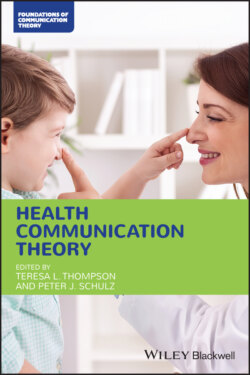Читать книгу Health Communication Theory - Группа авторов - Страница 37
Theory as Product
ОглавлениеWith roots in medical sociology and nursing, grounded theory has had meaningful impacts on health‐related research. Within health communication, Ellingson and Borofka (2014) cited three specific strengths of this approach. First, they claimed that grounded theory highlights participant voices and experiences through categories grounded in participant perspectives. For example, Donovan‐Kicken et al. (2012) grounded their analysis in 40 cancer survivors’ descriptions of the demands, obligations, and preparatory activities involved in discussing their illness. From these results, they then theorized the construct of communication work, which focuses on the labor and resources devoted to managing talk while living with illness. In another study, Peterson (2010) grounded her analysis in descriptions of the challenges that 45 women living with HIV or AIDS face while seeking and receiving social support. The research served as an initial step toward the development of a normative model of social support for women living with HIV.
Second, Ellingson and Borofka (2014) noted that grounded theory “often generates pragmatic, heuristic implications for improving communication within a variety of health contexts that, while not generalizable, are widely applicable and useful” (p. 538). For example, Martin’s (2016) study of the experience and communicative management of identity threats among 47 people with Parkinson’s disease offered insights that could be utilized in healthcare and interventions for combating identity loss and responding to identity challenges in adaptive ways. In another study, Ellingson (2007)’s ethnography of a dialysis unit yielded implications for several areas of health communication research, including improved staff training and delivery of care, further articulation of the relationship between communication and technology in contemporary healthcare, and the development of models of nursing leadership.
Finally, Ellingson and Borofka (2014) claimed grounded theory in health communication research “produces findings rich in contextual and interactional details that complement and contextualize other qualitative, critical, and quantitative analyses” (p. 538). To illustrate, critical health communication scholars have paired grounded theory with (i) the culture‐centered approach (see Chapter 14) to reveal enrollment disparities among African Americans and hospice care (Dillon and Basu 2016); (ii) media framing to elaborate tensions that emerge within the discursive space of HIV/AIDS in Indian newspapers (de Souza 2007); and (iii) functional theories of stigma to acknowledge the role of medical power, discrimination, and authority in healthcare encounters with transgender patients (Poteat, German, and Kerrigan 2013). Further, as a well‐known health communication scholar specializing in feminist and grounded theory methodologies, Laura Ellingson has advocated for studies that embrace a continuum approach across social science methodologies. From this approach – which Ellingson (2009) deemed crystallization – grounded theory, which is typically represented in traditional research report genres, can be creatively paired with more artistic representation, including photovoice techniques (e.g. Evans‐Agnew, Boutain, and Rosemberg 2017) and poetic transcription (e.g. Ellingson 2011).
